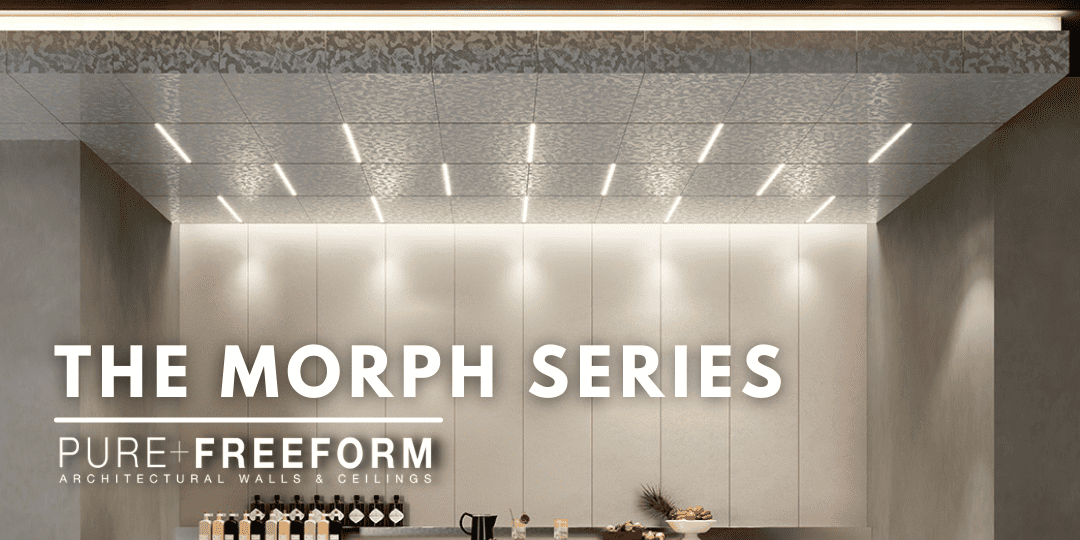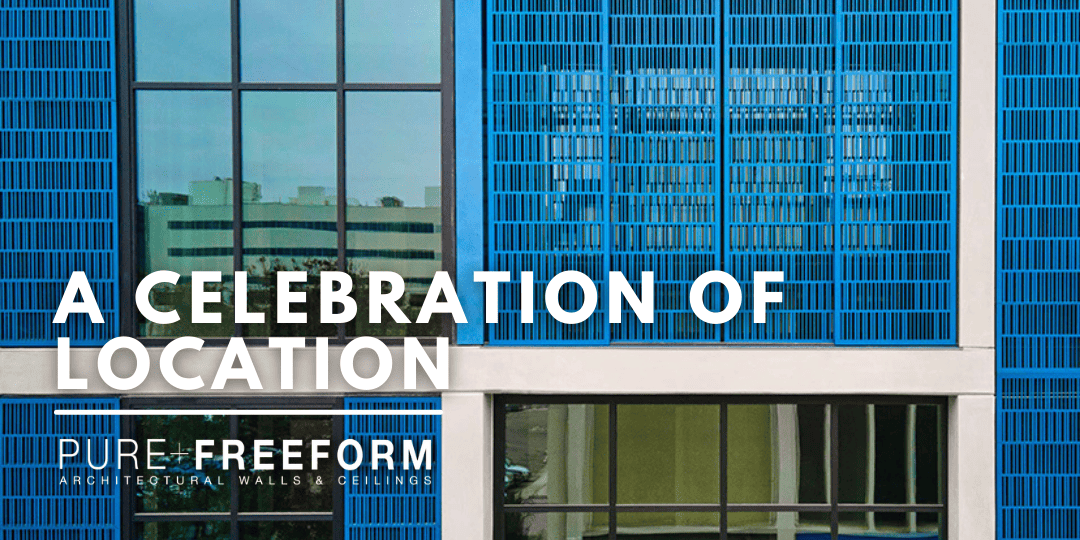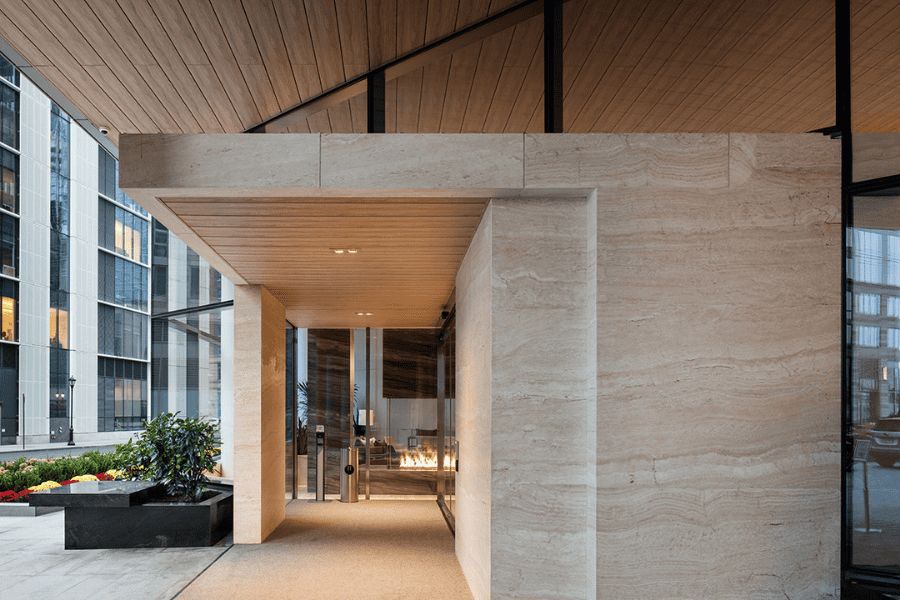
Create a seamless indoor to outdoor material transition
Indoor to outdoor material transition
Historically, building elements that transition from exterior to interior have been a pain point for designers. Soffits, walls, ceilings, canopies, and entryways have had their designs sacrificed in the name of performance, or vice-versa. Materials seem to focus on interior or exterior applications, but often the lack of flexibility is the core of the issue. Today, commercial and residential buildings alike seek seamless transitions between their indoor and outdoor areas to optimize the use of space. Below, we explore some of the more interesting and nuanced ways that projects have achieved material cohesion.
Ceilings

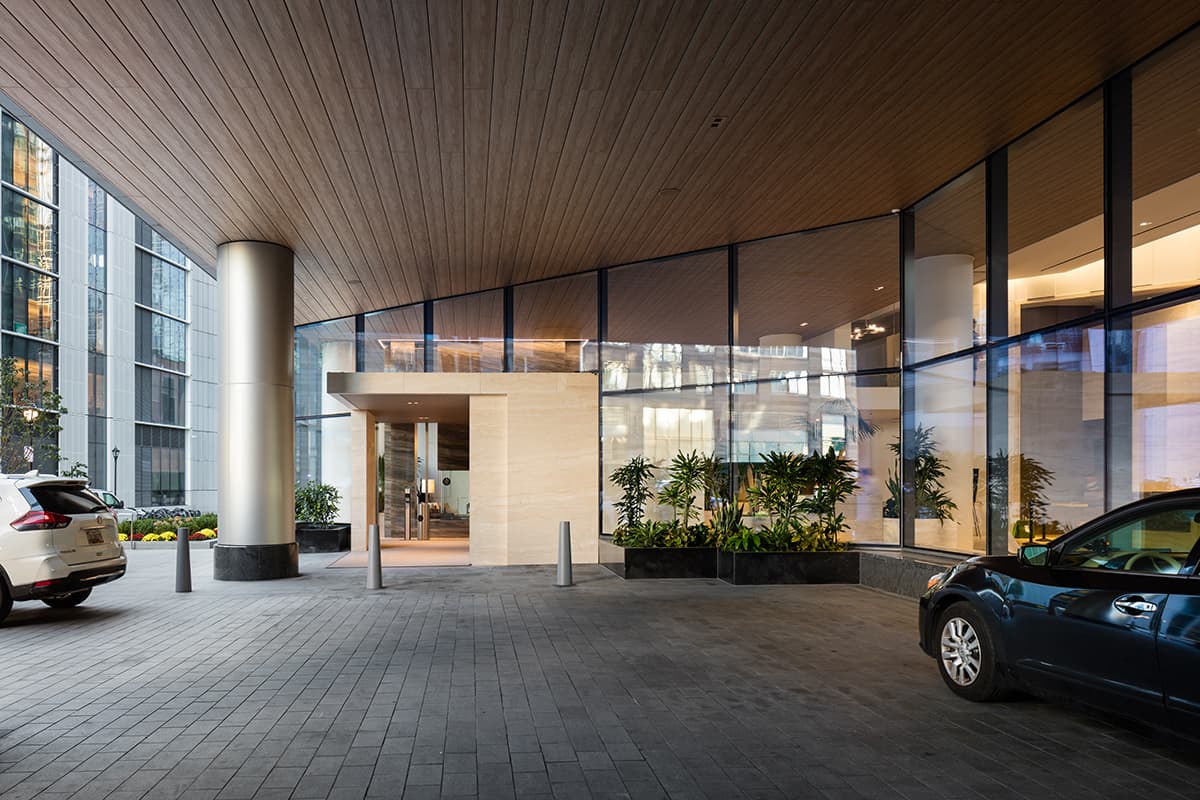
Pictured: 25 Kent, exterior wall and ceiling to interior ceiling, custom blackened steel. 2 Waterline Square, exterior ceiling to interior ceiling, Riverside.
Walls
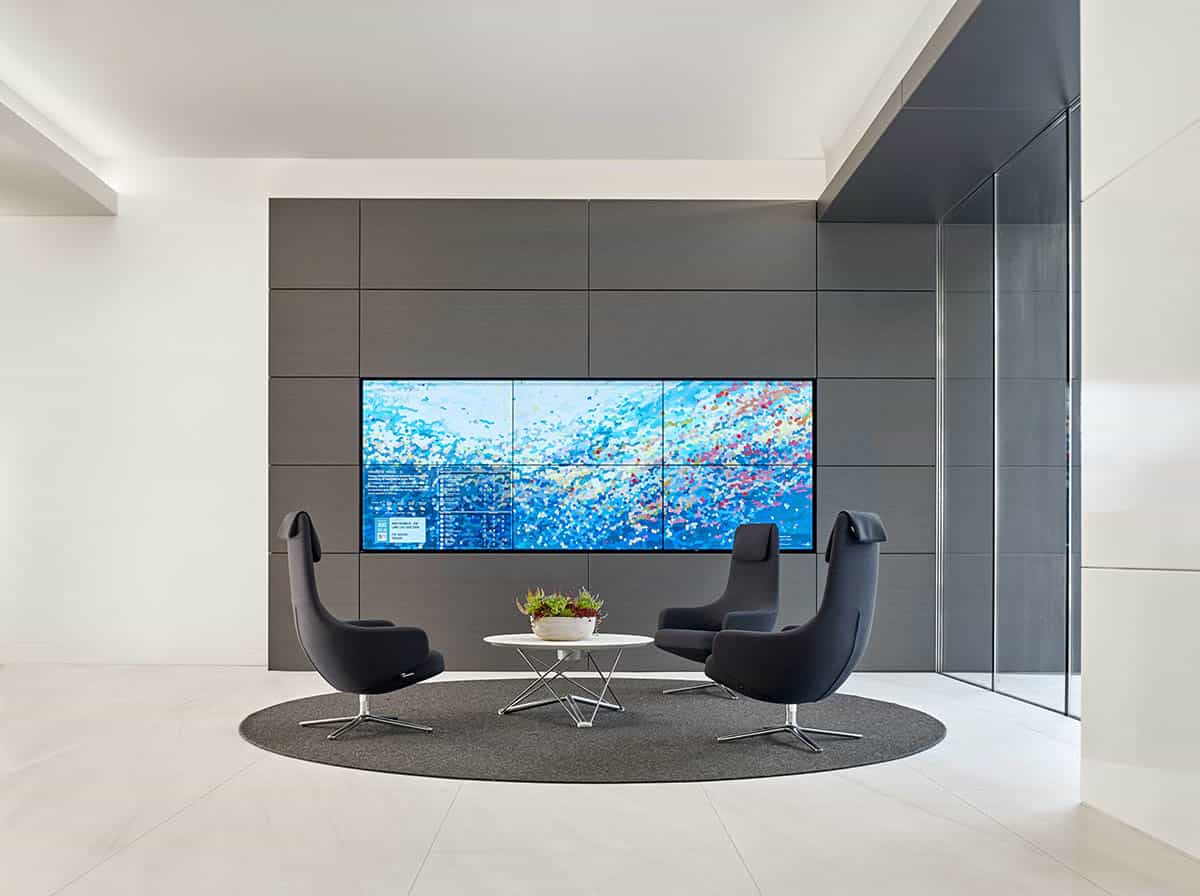
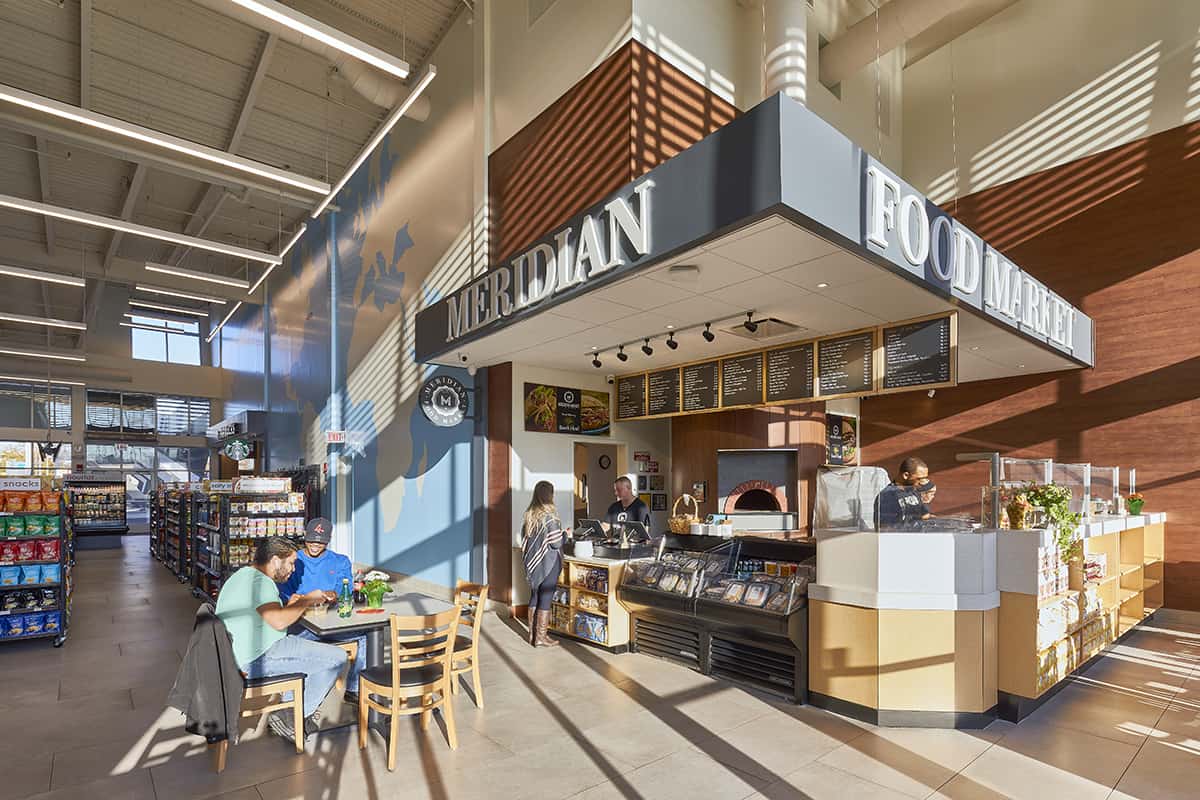
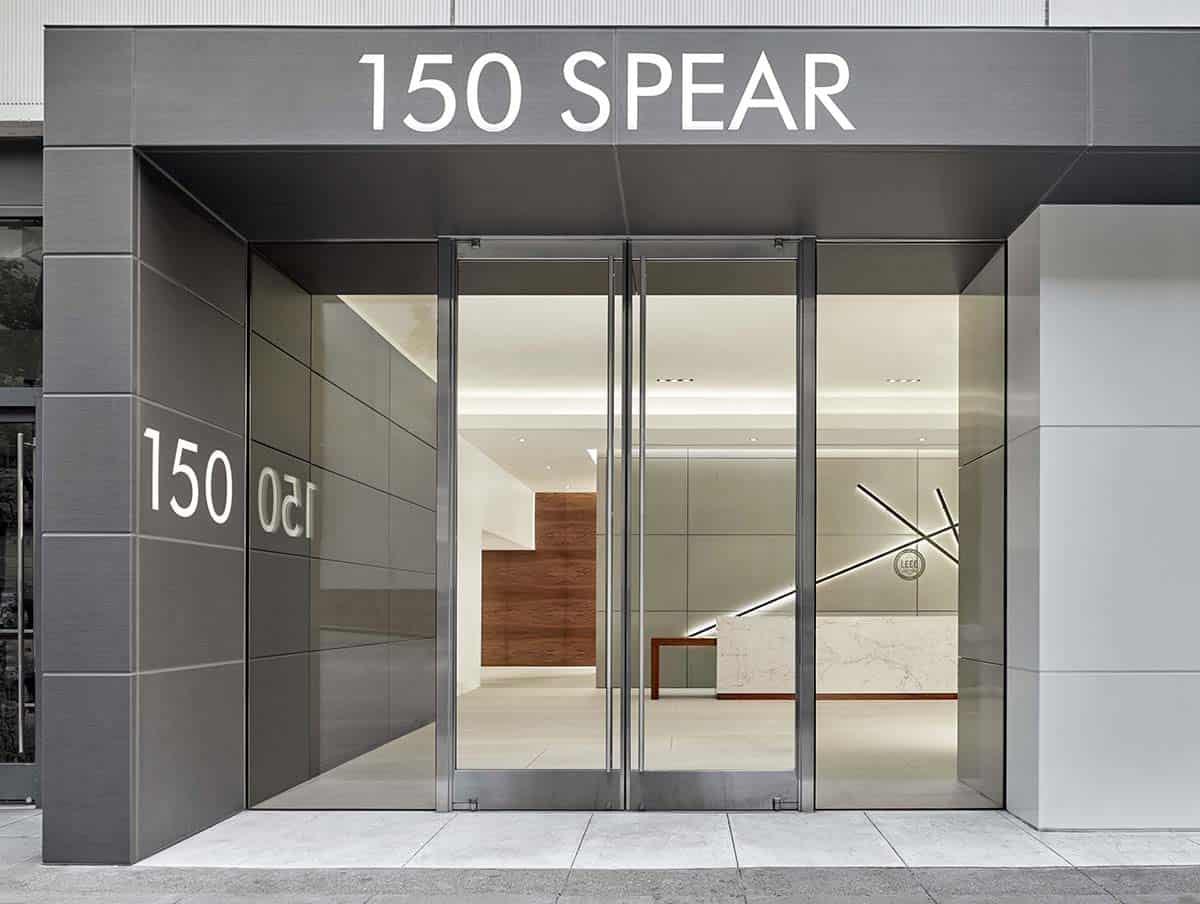
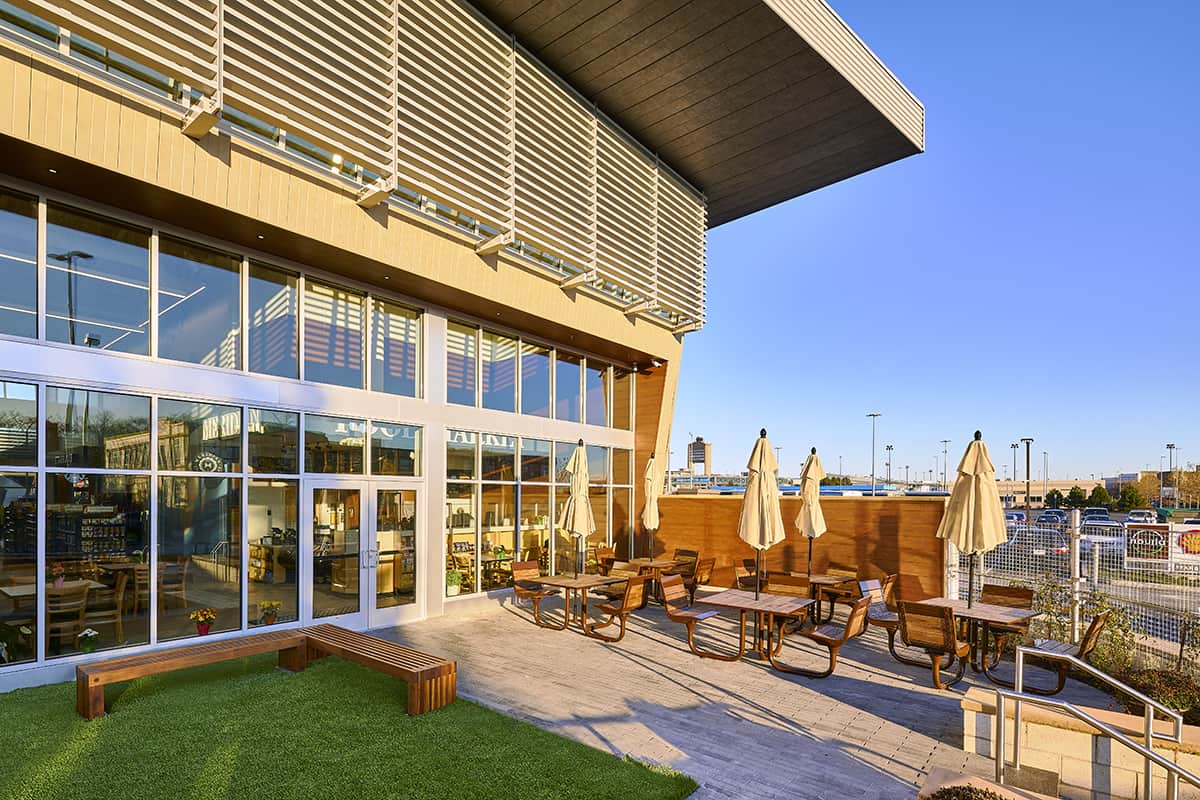
Pictured: 150 Spear Street, interior wall to exterior wall and canopy, Oxidized Silver Hairline. Meridian Market, interior wall to exterior wall, Parisian Rust in Flush Reveal panels.
Soffits
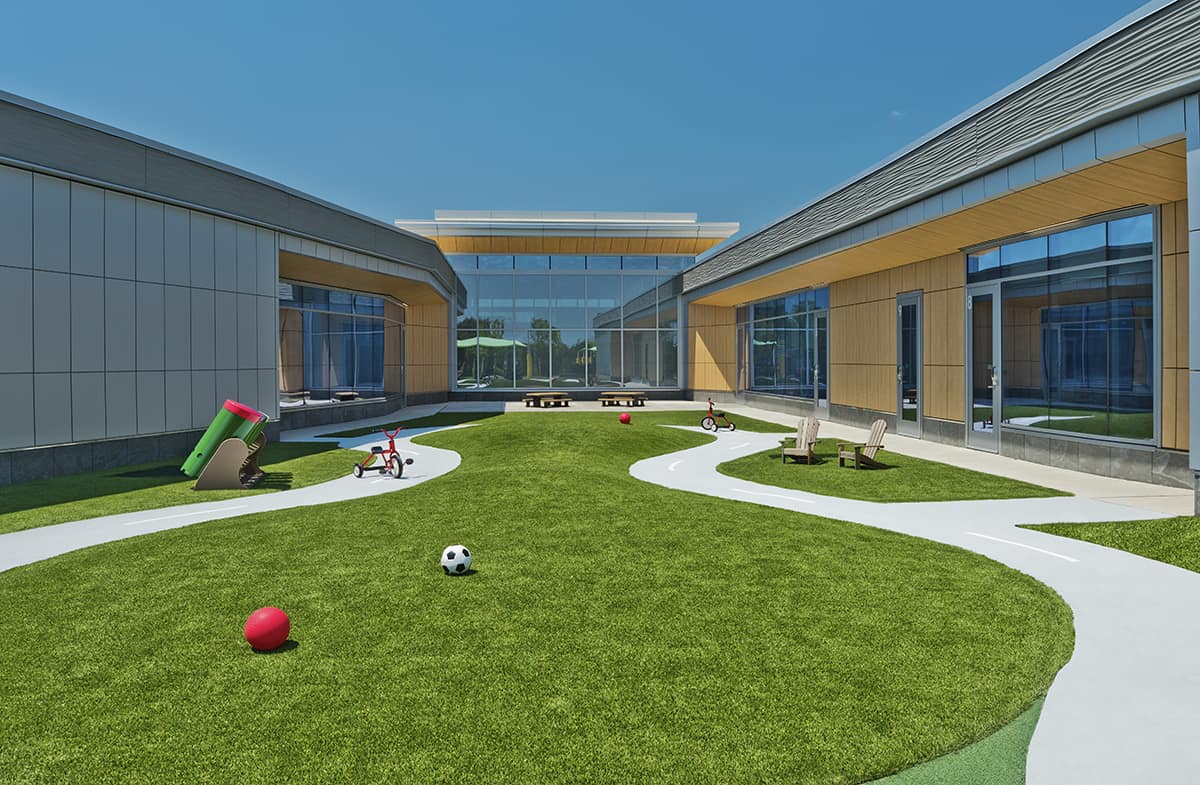
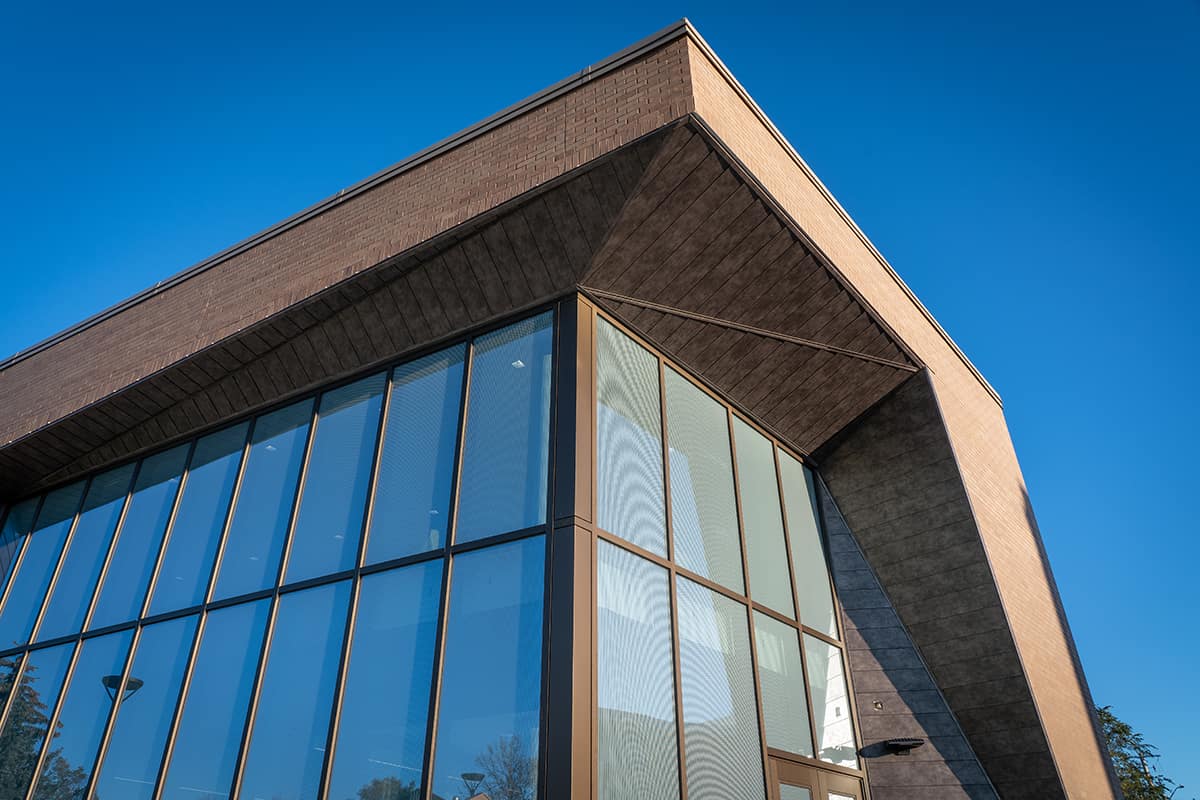
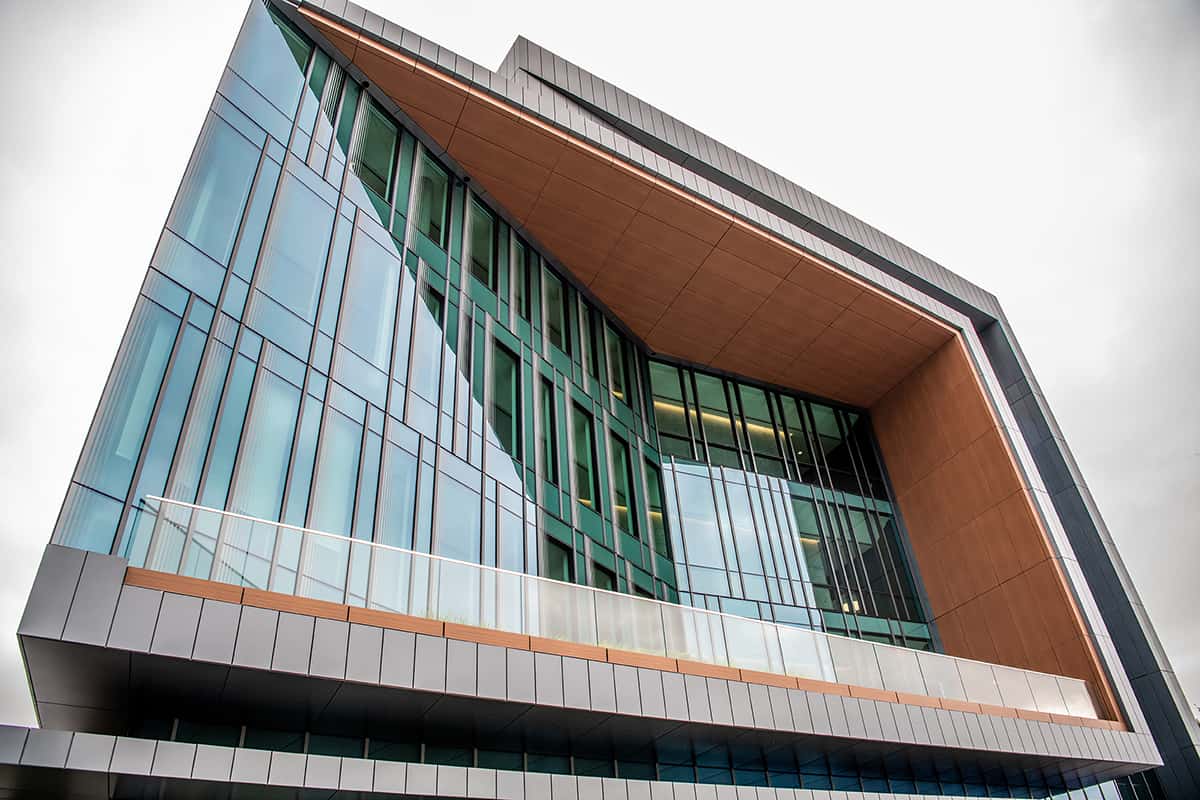
Pictured: Confidential childcare center, exterior wall to soffit, Miele Maple. Winona State University, exterior wall to soffit, Deco Bronze. The Lundquist Institute (LA Biomed), exterior wall to soffit, Bio Grain.




